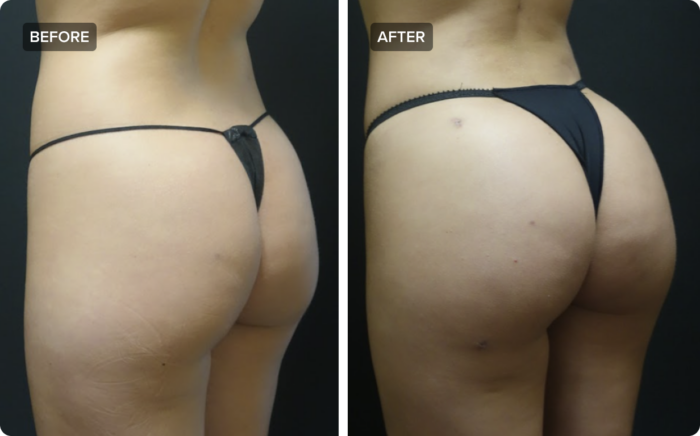In the new White Lotus season premier, there’s a scene with three “long-time, not old” forty-something female friends trading compliments about how “amazing” and “incredible” they all look. Kate (Leslie Bibb) asks wealthy, TV-famous Jaclyn (Michelle Monaghan) what kind of work she’s had done. Jaclyn won’t disclose her doctor’s name but coyly alludes to “maintenance,” and we’re all left guessing.
According to leading aesthetics experts, Jaclyn’s “maybe she’s born with it” glow-up is just the kind of result people will be asking for this spring. The subtle sophistication of Quiet Luxury may be dead when it comes to fashion, and makeup trends are going bolder, too. But maximalist lips, pillowed cheeks, and oversized breasts and butts won’t make a comeback anytime soon, doctors say.
Our Spring 2025 Real Talk Report distills the predictions of 17 innovative plastic surgeons, dermatologists, and other providers across the U.S., from Beverly Hills and Manhattan to rising aesthetics hotspots like Atlanta and Austin.
Their insights illuminate five top trends, all about results that look like you just woke up that way. Let’s break them down.
1. Regenerative treatments that enhance skin quality
“Regenerative treatments are the future of aesthetics,” says Dr. H. William Song, a physician in Oakland, NJ. Multiple providers we spoke to underscored this same theme, saying their patients want options that activate skin’s natural rejuvenation and repair responses. And while many still request Botox and fillers, they’re more excited by injectables and topicals with regenerative properties.
“There’s a clear trend toward improving skin quality rather than relying solely on fillers and neurotoxins,” notes Dr. Goretti Ho Taghva, a board-certified plastic surgeon in Newport Beach, CA. More patients are prioritizing medical facials, microneedling, BBL Moxi, Thermage FLX, and Ultherapy Prime to enhance skin texture and elasticity,” she says. “This shift reflects a more holistic and long-term approach to facial rejuvenation.”
Dr. Sheila Barbarino, a board-certified oculoplastic surgeon in Austin, TX, believes regenerative medicine is on the rise for several reasons. Compared to fillers and neurotoxins, “it’s a more natural result, it’s more long-lasting as we are building for the future, and it’s restoring what age, sun damage and bad genetics have taken away,” she explains. “In my opinion, it’s a healthier approach to aesthetic medicine.”
Dr. Song concurs, citing last year’s “big backlash against fillers. Patients are no longer interested in the overfilled look, and they are concerned about long-term effects of constant artificial filler injections.”
In Seattle, board-certified plastic surgeon Dr. Suzette Miranda points to another factor driving the rise of regenerative skin treatments: “Young people, especially girls, are focusing on skincare earlier and more intentionally than ever before, as a direct result of social media’s influence and the ease of access to information,” she says. “Natural rejuvenation has become a standout trend, especially among younger generations. This is why microneedling with PRP (using your own Platelet-Rich Plasma) and medical-grade skincare have become more popular with younger demographics.”
Laura Stelk, an Advanced Practice Nurse Injector in Dallas, emphasizes that patients are more savvy about skin care science. Along with PRF and exosomes, she expects interest in biostimulatory injectables to grow. “As the demand for science-driven, results-oriented treatments grows, regenerative medicine is setting a new standard by prioritizing skin health and longevity over quick fixes,” says Stelk. “It’s all about working with the body to achieve natural, sustainable results.”
In response, a growing number of practices offer proprietary treatments that tap into the restorative benefits of PRF, exosomes, and PDRN derived from salmon sperm, often combined with microneedling to heighten their effectiveness.
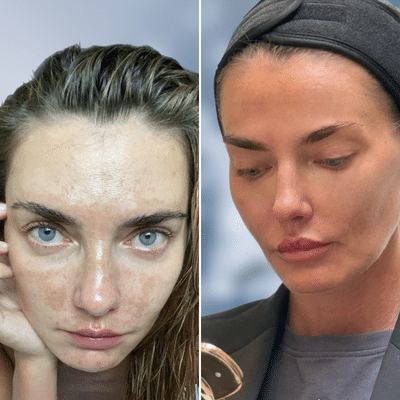
The most-requested treatment in Dr. Song’s New Jersey practice is AutoCore, a bespoke combination of PRP with plasma gel, PRF, exosomes, fat transfer, and low-level energy. He has even seen renewed interest in classic treatments like the Vampire Facelift, which combines hyaluronic acid fillers with PRP.
In Austin, Dr. Barbarino expects that the most popular treatment this spring will be her “kinetic facelift using a needless system called Enerjet, as well as microneedling with polydeoxynucleotides (aka PDRN).” Enerjet provides a subtle lift and stimulates new collagen production, while microneedling with PDRN “regenerates, restores, and rejuvenates skin improving texture, tone, radiance, and hyperpigmentation. Who isn’t looking for healthy, radiant skin?” (No one we know.)
2. Refreshed, defined eyelids
Upper and lower blepharoplasty will be especially popular through this spring, according to providers across the country.
RealSelf data backs up their prediction: searches for eyelid surgery increased 324% year-over-year last spring, and it’s the site’s the #1 most-searched procedure this year so far.
Dr. Jessica Lattman, a board-certified oculoplastic surgeon in New York City, is seeing more patients “seeking cosmetic eyelid surgery at a younger age” and expects that trend to continue through spring. “This allows for smaller changes, and an approach where you are maintaining a youthful appearance rather than waiting for major aging changes to occur, which require more extensive surgery.”
In Newport Beach, Dr. Ho Taghva sees similar demographic shifts. “One of the biggest trends I’m seeing is a significant increase in both upper and lower blepharoplasty across all age groups, including more male patients. Many are seeking a refreshed, well-rested appearance without altering their natural eye shape.”
The surgeons we consulted cite several factors driving the procedure’s popularity, starting with the fact that while it’s less invasive than many forms of facial plastic surgery, the effect can be profound.
“Now more than ever, patients realize that it’s an extremely effective surgery that can be performed with very little downtime and recovery time, and it can make a huge impact on their appearance without anyone noticing they had surgery,” Dr. Barbarino says. “They only look more well-rested, bright-eyed, and youthful.”
Dr. Dilip Madnani, a board-certified facial plastic surgeon in New York City, points out that patients are also more focused on their eyes “after all the mask wearing from the last few years”—and they’re more aware of options for rejuvenating them, thanks to social media.
For the upper eyelids, women in particular often seek better definition. “Upper blepharoplasty is especially popular among women who are mindful of evolving makeup trends that emphasize a defined eyelid contour,” says Dr. Ho Taghva. “Double eyelid surgery—often associated with Asian patients—is now recognized as a valuable technique across all demographics to enhance the pretarsal crease and platform, creating a naturally defined eyelid without an overdone or pulled look. These procedures reflect the growing preference for subtle, refined aesthetic enhancements that align with modern beauty trends.”
Some people also feel wary of temporary under-eye filler, which can yield beautiful results or lead to lumps and puffiness (often depending on the injector’s expertise). “When it comes to lower eyelid concerns like bags and hollowness, people tend to be shying away from fillers and trying to get more permanent results with surgery,” Dr. Madnani explains.
Dr. Mansher Singh, a board-certified plastic surgeon in New York City, expects to see growing demand from patients in their 20s and 30s for a combination of lower blepharoplasty and under-eye facial fat transfer. Like Dr. Madnani, Dr. Singh attributes this shift to “filler fatigue,” as well as a desire for “more long-lasting and natural results.”
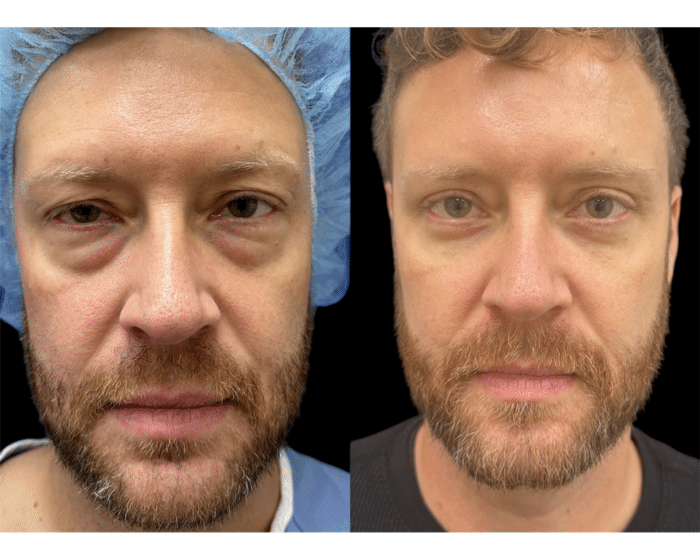
3. Surgical facial rejuvenation that enhances natural beauty
Facelifts were the #6 most-popular procedure on RealSelf in 2024, jumping to #3 so far this year (measured by search volume). Surgeons across the U.S. say they’re seeing this rising interest in their practices, and they expect more requests for deep plane facelifts, mini lifts, and other facial rejuvenation surgeries this spring.
A growing understanding that modern facelift techniques deliver more natural-looking results than fillers, with far more longevity, is a primary driver of the trend.
“In the past, surgery could look obvious and ‘done,’ and patients opted for less invasive options thinking they could look more natural,” says Dr. Jill Hessler, a board-certified facial plastic surgeon in San Francisco. Now, “the extreme filler trend now seems to be behind us. Gone are the days of harsh jawlines and overfilled checks that don’t create a youthful appearance but only look good from one view on social media still photos. I now see patients going back to surgery as a more natural option than placing various foreign materials in the face.”
It may surprise some that a facelift result can look more natural than minimally invasive treatments, but “modern facelift techniques, such as the preservation deep plane facelift I perform, allow a natural rejuvenation that reduces signs of aging while preserving the patient’s identity, with less downtime and recovery that traditional facelift techniques,” says Dr. Hessler.
She also says patients are seeking facelifts at a younger age, “often avoiding the injections and minimally invasive treatments altogether. This allows a single procedure with single recovery time, for years or decades of lasting results.”
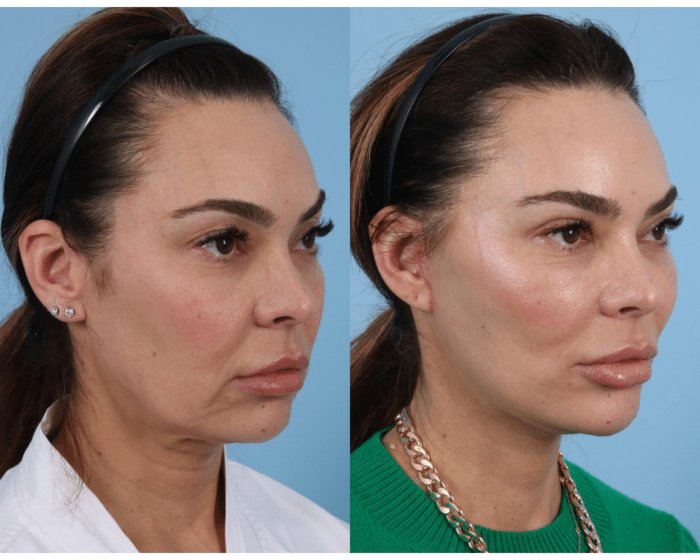
In New York City, Dr. Singh’s practice has had an influx of patients in their late 30s and 40s seeking a facelift to correct sagging skin left after massive weight loss brought on by Ozempic and other GLP-1s—and he expects to see this even more throughout the year. “Among this cohort, there is a very strong desire for natural and subtle results. And most of these patients want to avoid anesthesia and do it under oral sedation with local anesthesia,” he says.
Dr. Robert Colgrove, a board-certified plastic surgeon in Atlanta, also reports ”a definite increase in demand for facelift and eyelid surgery under local anesthesia with a mild sedative like Valium,” an option that sidesteps potential side effects of general anesthesia and can speed recovery.
Several surgeons we consulted report more patients combining facelifts and neck contouring with complementary procedures, to sculpt and rejuvenate the entire face and neck.
“This approach allows for more balanced, natural-looking transformations while minimizing overall downtime,” explains Dr. Shahram Salemy, a board-certified plastic surgeon in Seattle. In his practice, “facial rejuvenation is in high demand, with many opting for lower facelifts, eyelid lifts, fat transfer to the cheeks, and lip lifts.” His patients are also requesting “natural, refreshed results—enhancing your features without obvious signs of surgery.”
In New York City, board-certified plastic surgeon Dr. John Mesa also reports “increased interest in combining treatments to achieve comprehensive facial rejuvenation.” For spring, he predicts his patients will be “heavily focused on achieving a defined, youthful jawline and chin area. This shift is primarily influenced by recent celebrities like Lindsey Lohan and Demi Moore, who show a refreshed look.”
Dr. Mesa also anticipates more interest in jawline definition via mini lower facelifts and chin liposuction, noting “a growing demand for natural-looking results. Patients want to look refreshed and rejuvenated without appearing overdone.”
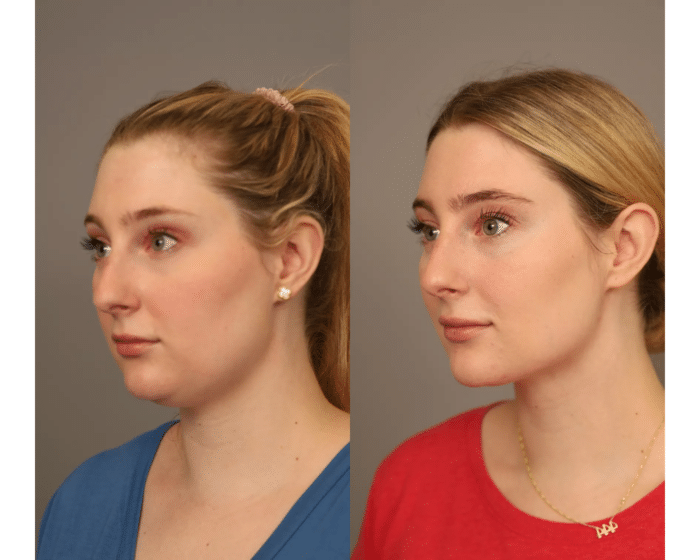
Dr. James Marotta, a board-certified plastic surgeon in Long Island, says more of his patients are “looking to enhance and sculpt their facial features.” He expects the most popular procedures this spring will be “a deep plane facelift with deep neck contouring,” to reverse jawline sagging and neck fullness.
Dr. Marotta has also noticed more interest from younger patients. For them, “deep neck contouring can be done as a standalone procedure, with just a scar hidden underneath the chin” to “achieve a snatched neck and jawline that patients may lack due to genetics. Combined with other procedures like fat transfer, a chin implant, and focused liposuction, the entire facial and neck structure can be sculpted.”
In Newport Beach, Dr. Ho Taghva foresees “a rise in facial fat transfer consultations, particularly from patients looking to correct the hollowed appearance caused by excessive buccal fat removal or poor filler work. A youthful face has soft contours, and many patients now regret over-reducing their facial fat.”
4. Downsized breasts and “internal bras”
Breast augmentation is perennially popular, but plastic surgeons say women are looking for enhanced support, lower implant complication rates, and perkier, more naturally shaped breasts that look proportionate with their frame—and they expect this trend will only accelerate this spring.
Dr. Urmen Desai, a board-certified plastic surgeon in Beverly Hills, explains that the desire to downsize implants reflects an increased focus on fitness, wellness, comfort, and long-term health. “I see this as part of a broader trend towards more natural, balanced aesthetics,” says Dr. Desai.
Another factor: maximalist breasts have fallen out of fashion, thanks in large part to social media influencers and celebrities. “Societal preferences for more subtle, natural-looking bodies have grown, with many women now seeking a proportionate appearance that aligns more closely with their individual frame,” notes Dr. Desai. Large implants are heavy, so “downsizing allows for improved mobility and less strain on the body. Many of my Southern California patients are motivated by personal or lifestyle changes, such as aging, motherhood, or the desire to feel more confident in their everyday activities.”
Dr. Desai reports more patients asking for an “internal bra” made of surgical mesh, saying “patients are increasingly choosing this scaffolding during breast augmentation or reconstruction procedures due to its ability to provide enhanced support and improve the long-term stability of implants.” This support “helps to prevent implants from dropping or shifting over time, offering a more secure and natural shape.” It can also help prevent complications like displacement or bottoming out. Another bonus? “It can improve the overall aesthetic outcome by providing a firmer, more youthful look and feel.”
Dr. Ho Taghva has similar predictions for breast trends. “This spring, I anticipate a continued rise in demand for natural, subtle breast augmentation (B/C cup range) over the larger sizes that were popular in the past. More patients are also opting for endoscopic transaxillary breast augmentation for a scarless, less painful recovery, and Motiva implants for their natural feel and lower capsular contracture rate.” When it’s possible, she prefers to place implants below the fascia, “the least painful approach with highly natural results and high satisfaction rates.”
Smaller implants will also continue trending this spring in Dallas, where board-certified plastic surgeon Dr. John L. Burns sees patients looking for a more athletic body. “Many athletic patients want their implants placed above the muscle in a subfascial or subglandular plane,” to avoid animation deformity (a visible shifting of the implant). He also expects growing demand for “Motiva implants, which have a silk surface with a lower incidence of capsular contracture and implant malposition. The Ergonomix Motiva implant is teardrop shaped and provides a more natural shape and feel.”
In Seattle, Dr. Salemy is also “seeing a shift toward more natural-looking breast augmentations, with patients wanting enhancement rather than an obviously augmented look.” He also prefers Motiva implants and says “for the right patient, above-the-muscle placement can provide a shorter recovery time, eliminate animation during workouts, and achieve a stunning result.”

Across the country in West Palm Beach, board-certified plastic surgeon Dr. David Rankin sees the desire for “a more natural, athletic look” from all of his patients. Dr. Rankin specializes in breast implant removal, so the nature of his practice means that he doesn’t see seasonal shifts in patient requests. That said, he does see that “women are becoming increasingly aware of potential implant-related complications.”
Most of Dr. Rankin’s patients find him after experiencing implications or health concerns that haven’t resolved through other treatments, though some have decided “their implants do not serve them any longer. More often than not, they choose to have a breast lift as well to achieve a more aesthetically pleasing result. My top priority is helping them feel better and love the way they look.”
5. Body contouring, including surgical lifts, tucks, and (smaller) BBLs
Several plastic surgeons cited tummy tucks, body lifts, brachioplasties (arm lifts), thigh lifts, and full mommy makeovers among their most-requested procedures as people look forward to shedding layers and showing more skin this summer.
Dr. Suzette Miranda, a board-certified plastic surgeon in Seattle, says GLP-1s continue to drive demand for surgical body contouring, as more patients seek solutions for excess skin after rapid weight loss. “Rapid weight loss often leaves skin lacking elasticity, creating the need for treatments that restore shape and firmness. Since our bodies rapidly change with GLP agonists, more patients are wanting to discuss these surgeries than ever before.”
In the same Seattle neighborhood, Dr. Salemy also sees “a strong demand for procedures that help our patients feel confident and summer-ready. Mommy makeovers and surgery after weight loss, including tummy tucks, breast lifts, and augmentations, continue to be popular as patients prepare for warmer weather.”
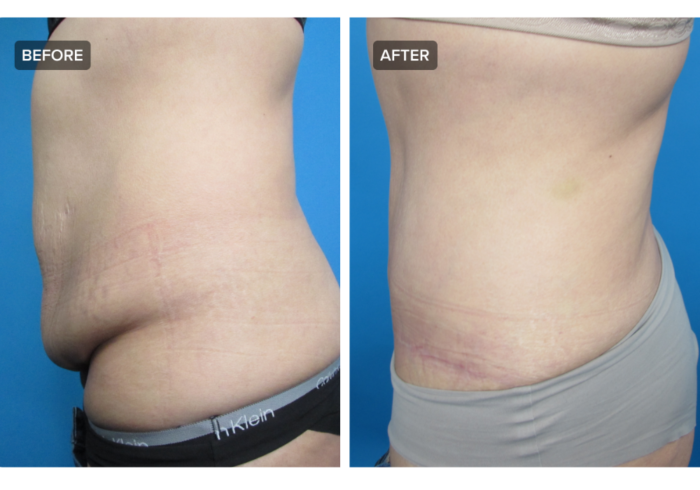
Down in Dallas, Dr. Burns reports surging interest in energy-assisted liposuction to create more muscle definition and highlight natural contours, often coupled with a skin tightening treatment like BodyTite or Renuvion.
Dr. Burns also predicts that his spring Brazilian butt lift patients will request “shape over volume. Most patients simply want a round and shapely butt, not the max volume results of a few years ago. Like breast augmentation, less is more.”
Dr. Karl William Schwarz, a board-certified plastic surgeon in Miami, sees a similar BBL trend taking shape in his practice. “I have been performing BBLs as a significant part of my practice for fifteen years and over the past year, I’ve noticed that most patients requesting a BBL are specifically asking for the Ogee BBL, which focuses on achieving a natural, balanced shape. The days of exaggerated celebrity curves—where a disproportionately large butt doesn’t match the legs or body—are fading,” a trend we first reported on as rumors swirled about whether a less curvy Kim Kardashian had actually reversed her BBL.
As with downsized breasts, the desire for a more naturally athletic physique is fueling this shift, says Dr. Schwarz. “Today’s patients want a subtle, sculpted look that gives the impression their results came from dedicated time in the gym or on the Pilates Reformer.” (Social media influencers wary of judgment from their followers can just ramp up their workout content in advance of their procedure, creating the illusion that they sweated for those curves.)
Dr. Schwarz says his BBL patients’ primary goal is “filling in hip dips without significantly increasing buttock volume. While completely avoiding added volume isn’t possible—fat must be blended strategically across the hips, buttocks, and legs for a seamless, natural transition—patients now prioritize shape over size” in pursuit of a “harmonious, athletic contour.”
Brazilian butt lift before and after photo courtesy of Dr. Jeff Angobaldo, board-certified plastic surgeon in Plano, TX
The Spring 2025 Real Talk Report draws on the insights of RealSelf search data and Verified doctors. Find procedure guides, patient-reported costs, and Worth It Ratings on RealSelf or send questions to contactus@realself.com.








